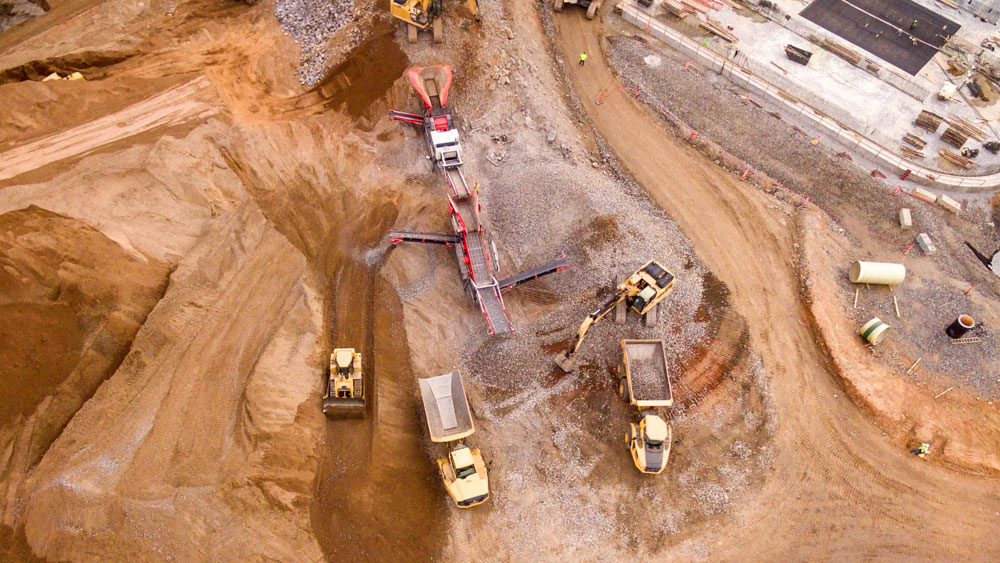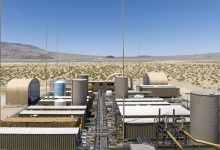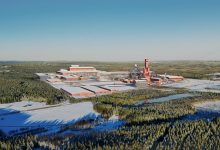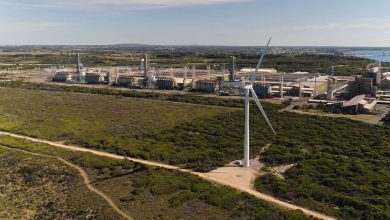Zambia Has the Best Mining Investment Environment in Southern Africa
“The success and mistakes of country selection will determine the ultimate success or failure of the mining project.” On June 29, at the “Silu Mining Forum·2019”, Ren Junping, deputy director of the Overseas Exploration Institute of the Tianjin Geological Survey of the China Geological Survey made a speech entitled ‘Progress in International Cooperation in Southern Africa Geological Survey’. He believed that Zambia’s mining investment environment is the best, Lesotho, Swaziland and five small island countries are not suitable for investment.
In Southern Africa, there are market-influenced mineral resources and China’s complementarity. Its overall resource development is low, and its mining development potential is huge. It is expected to become a continuation base for China’s strategic resources in the 21st century. Among them, the global gold reserves are about 54,000 tons, Southern Africa gold reserves are 0.83 million tons, accounting for 15.37% of global reserves, the gold global production is about 1893 tons, southern Africa’s annual gold production is about 337 tons, accounting for 17.8% of the world. African gold is concentrated in the craton of Tanzania, the craton of Zimbabwe and the Kapwala craton. Cobalt, copper, chromium, nickel and platinum are also major minerals in Southern Africa. There are more than 30 large copper-cobalt deposits in central Africa, so the market for mining equipment will be better and better.
Ren Junping comprehensively judged the mining investment environment in Southern Africa from the perspectives of working conditions, political environment, transportation, and law. He believed that Zambia’s mining investment environment is the best, second only to Tanzania, Mozambique, Rwanda, Congo (Gold), Namibia, Zimbabwe, Madagascar. The countries with certain risks are South Africa, Angola, Malawi, Equatorial Guinea, Gabon, Uganda, Kenya, Congo (Brazzaville), Burundi, Botswana; Lesotho, Swaziland and 5 small island states are not suitable for investment.
At present, there are more than 1,500 foreign-funded enterprises in Southern Africa, mainly including gold, copper, cobalt, uranium, thorium, platinum and oil and gas. In recent years, more than 120 Chinese-funded mining companies have entered the mineral-rich Southern Africa, mainly engaged in the exploration and development of copper, gold, chromium, nickel, platinum, palladium, zirconium, titanium and uranium in Congo (Kinshasa), Zambia, Namibia, Mozambique, Zimbabwe and Tanzania.
China and Zambia established diplomatic relations on October 29, 1964. Zambia was the first country in Southern Africa to establish diplomatic relations with China. The traditional friendship between the two countries is profound and bilateral relations are constantly developing. During the period of President Kaunda’s administration (1964-1991), the Tanzania-Zambia Railway assisted by China became a monument of friendship between China and Zambia and even between China and Africa. In recent years, mutually beneficial cooperation between China and Zambia in economic and trade areas has made continuous progress, especially in the development of mineral resources. Many Chinese-funded enterprises have begun to invest in the development of mineral resources in Zambia and have achieved good results.
According to preliminary statistics, China Nonferrous Metals Construction Group Co., Ltd. currently has more than 8 Chinese-funded enterprises involved in Zambia mineral resources development and investment, mainly engaged in the development of copper mine and metallurgy. Others are mainly engaged in the development of coal, nickel and manganese ore. The investment has exceeded USD 200 million and employs more than 2,500 local employees. The Zambia Chambishi copper mine recovery project is China’s largest investment project in Zambia, with a planned investment of USD 150 million. It is jointly operated by China Nonferrous Metals Construction Group Co., Ltd. (China Nonferrous Metals Group) and Zanguo United Copper Mine Company. As the first non-ferrous metal mine approved by the Chinese government for development and construction, the Chambishi Copper Mine is a landmark project for China-Africa cooperation.
Copper concentrates can only be sold locally because of the high costs of shipping back to China. If a smelter is built in the local area, and the copper concentrate is refined into blister copper and then shipped back to China for refining, it can not only greatly reduce transportation costs, but also effectively alleviate the serious shortage of domestic copper resources. So, the China Nonferrous Metals Group invested USD 15 million to build a wet smelter. In September 2007, the Chambishi wet smelter was officially put into operation. China Nonferrous Metals Group will invest another USD 200 million in Zambia to build a Chambishi crude copper smelter with an annual output of 150,000 tons of copper to increase the added value of copper exports. Based on the Chambishi Copper Mine, China Nonferrous Metals Group will build a China Nonferrous Metals industrial park, increase investment, attract domestic investment, introduce more Chinese-funded enterprises, promote the faster development of the local economy, and achieve mutual benefit and win-win results.
China Jinchuan Group, China’s largest nickel producer, participated in the development of the Munari nickel project in the Southern province of Zambia. The project was invested and built by the Australian company Albiden. At the end of 2006, Jinchuan Group and Albiden signed a supply agreement, and all nickel concentrates and other metals produced by the Munari nickel mine will be sold to Jinchuan Group. At the same time, Jinchuan Group will provide USD 20 million to the nickel mine project for the construction.
Collum, located in the Qoma area of the Southern province, is a coal mine invested by a Chinese private enterprise. It currently has a total investment of about USD 1.5 million. It started production in 2003, with an annual output of about 20,000 tons in 2004. In 2006, the production capacity reached 120,000 tons. The mine now has only one pit and another is under construction, which could produce 200,000 tonnes a year if all of the mine is put into production.
Ren Junping said that CGS has carried out more than 20 projects in Southern Africa, such as land transfer projects, venture exploration fund projects and technical assistance projects of the Ministry of Commerce in Southern Africa. It has established good cooperative relations with the mining departments and companies. In the aspects of basic geological understanding and metallogenic regularity research, 17 mineralization prospects such as gold, copper, cobalt, uranium, chromium, nickel and platinum group have been defined, mainly in Tanzania, Zambia, Congo (Gold), Namibia, Zimbabwe and South Africa. At the same time, it has obtained a large number of first-hand results, and delineated more than 100 comprehensive anomalies and exploration targets.
Under the unified deployment of the China Geological Survey, how to carry out the existing achievements and new projects to accurately serve the needs of countries and Chinese enterprises is the key problem to be considered by the geological survey project in Southern Africa. Of course, the Tianjin Geological Survey Center also hopes to hear feedback from Chinese enterprises investing in Southern Africa, so as to better integrate the non-profit geological survey work with the needs of all parties in the future project implementation.







